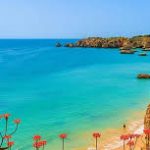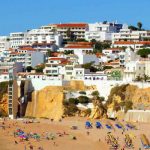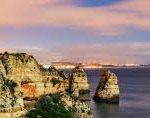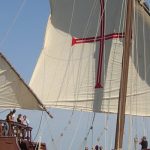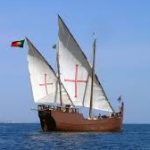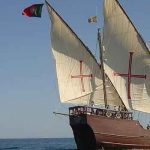Désolé, aucun membre trouvé.
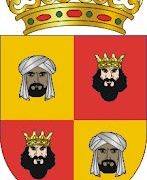
Região do Algarve
le Portugal
Le Algarve est la région la plus méridionale de Portugal continental. Il a une superficie de 4,997 Km2 (1,929 milles carrés)[10] avec 451,006[11] Habitants permanents, et incorpore 16 Municipalités.[12]
Le centre administratif de la région se trouve dans la ville de Flair, où les deux aéroport (IATA: FAO) et Université publique, le Université de l’Algarve, sont situés. La région coïncide avec Quartier de Faro. Le tourisme et les activités connexes sont vastes et constituent l’essentiel de l’économie estivale de l’Algarve. Production de denrées alimentaires, qui comprend le poisson et d’autres fruits de mer, différents types de fruits tels que Oranges, figue, Prunes, caroube haricots, et Amandes, sont également importantes sur le plan économique dans la région.
Quoique Lisbonne surpasse l’Algarve en termes de revenus touristiques,[13] l’Algarve est toujours, total, considérée comme la plus grande et la plus importante région touristique portugaise, avoir reçu un total estimé de 7.1 millions de touristes en 2017.[14] Sa population triple pendant la haute saison des vacances en raison des résidents saisonniers.[15] En raison des normes élevées de qualité de vie, principalement en ce qui concerne la sécurité et l’accès aux services de santé publique, ainsi qu’en raison de facteurs culturels et de conditions météorologiques considérablement bonnes, l’Algarve est de plus en plus recherché, principalement par des Européens d’Europe centrale et septentrionale, comme lieu d’installation permanent.[16] UNE 2016 Une étude américaine a conclu que l’Algarve était le meilleur endroit au monde pour prendre sa retraite.[17]
L’Algarve est l’une des régions les plus développées du Portugal et de l’Algarve., avec un PIB par habitant à 83% de la moyenne de l’Union européenne, Il dispose du deuxième pouvoir d’achat le plus élevé du pays, debout uniquement derrière Lisbonne.[3]
Médias
Amis
Publications récentes

Receita de Rota Algarvia – Chef DUAL
- Mars 12, 2021

Corridinho d'Algarve
- Mars 12, 2021

“FLEURS” (FIC. DOC. 90′) – 2007
- Mars 9, 2021

















